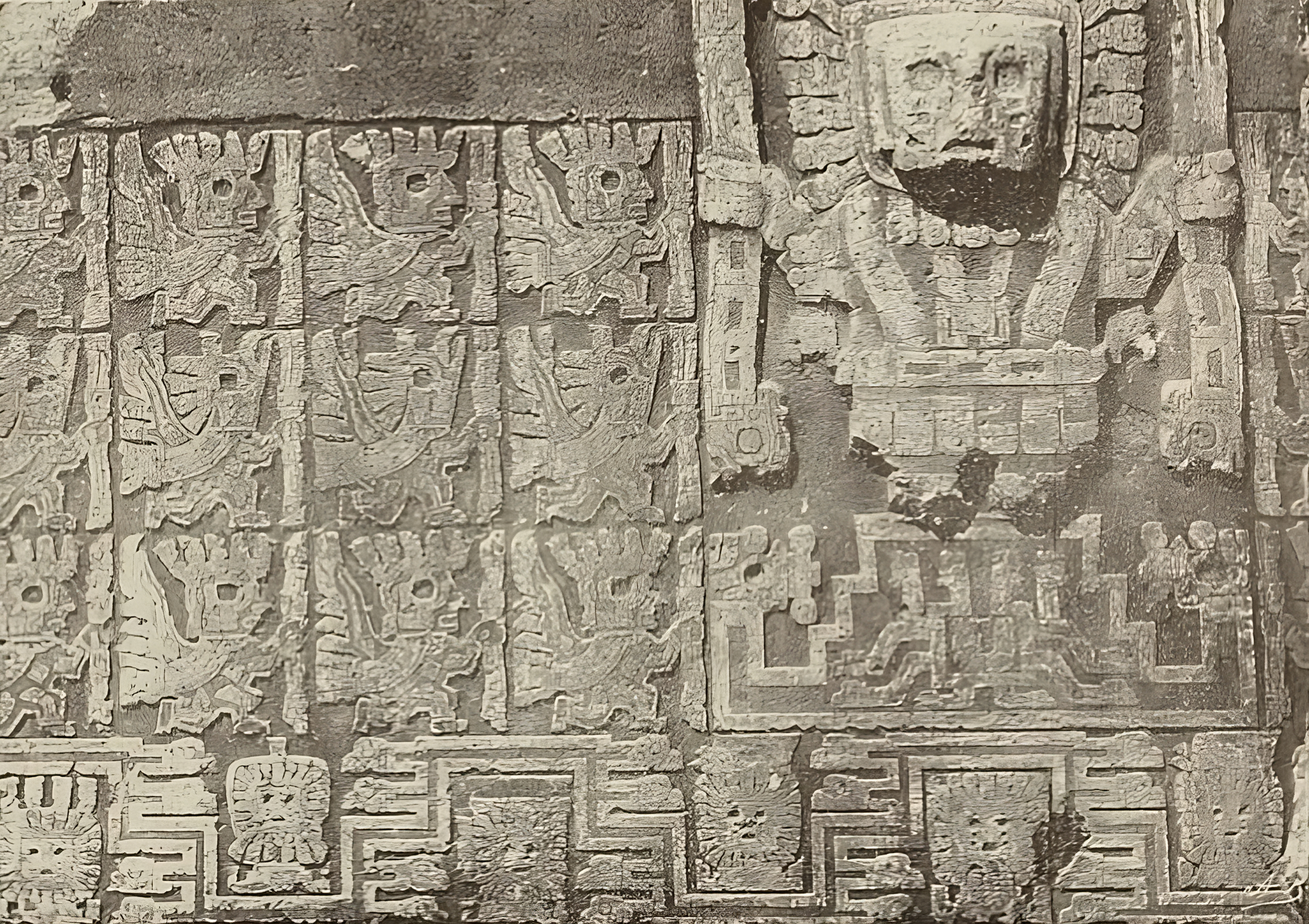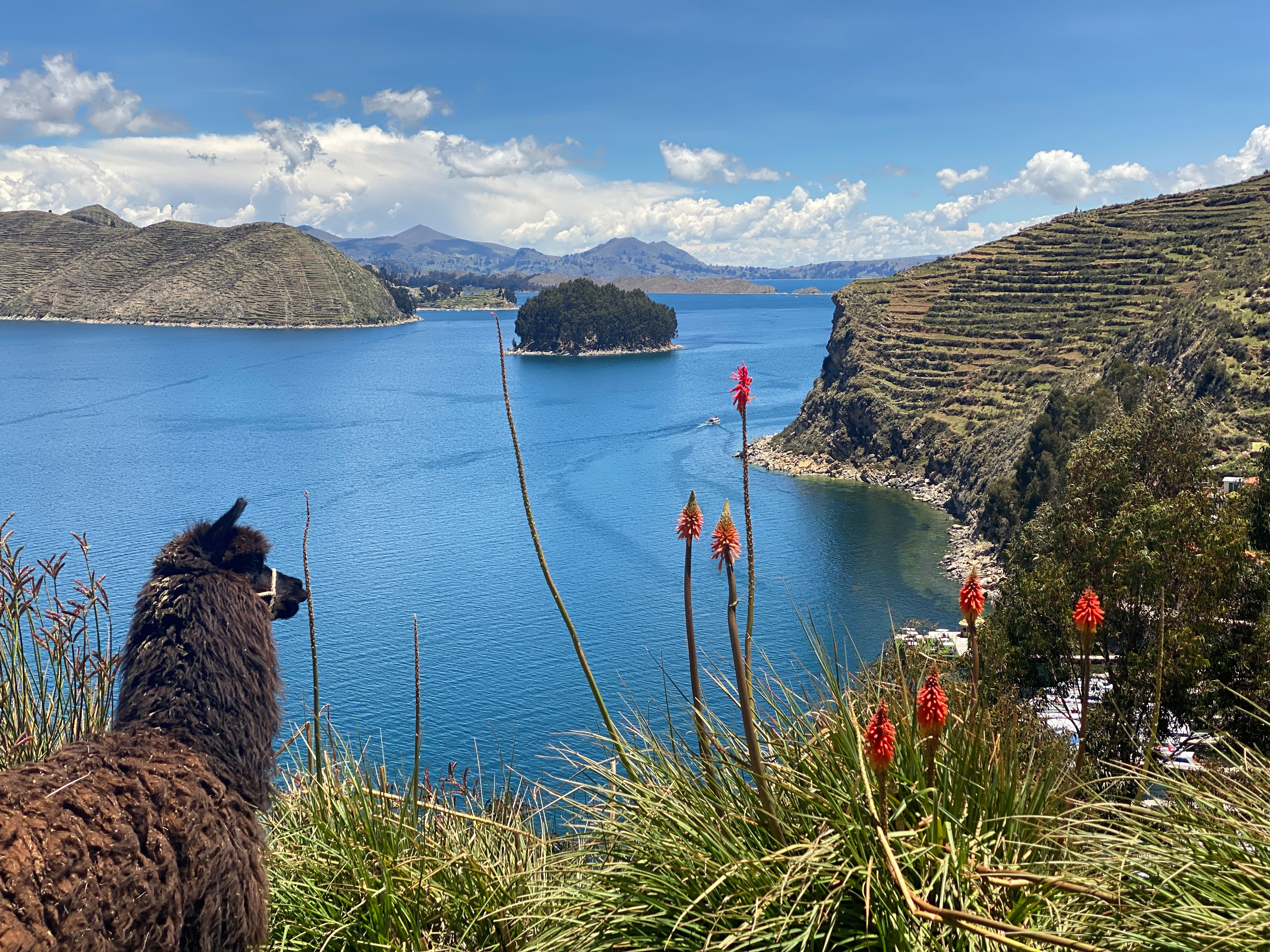|
Kimsa Chata (Ingavi)
Kimsa Chata, also spelled Kimsachata, ( Aymara and Quechua ''kimsa'' three, Pukina ''chata'' mountain, "three mountains", spellings ''Quimsachata, Quimsa Chata'') is a mountain in the Andes in Bolivia. It is located in the Chilla-Kimsa Chata mountain range south-east of Wiñaymarka Lake, the southern part of Lake Titicaca. It lies in the La Paz Department, Ingavi Province, Tiwanaku Municipality, about 15 km south of the archaeological site of Tiwanaku and the village of the same name. Kimsa Chata is situated between the mountains Nasa Puqi in the north and Chuqi Ch'iwani Chuqi Ch'iwani ( Aymara ''chuqi'' gold, ''ch'iwa'' edible, cooked leaves, ''-ni'' a suffix to indicate ownership, Hispanicized spelling ''Choque Chihuani'') is a mountain in the Chilla-Kimsa Chata mountain range in the Andes of Bolivia. It lies ... in the south.Bolivian IGM map 1:50,000 Tiahuanacu 5844-II Kimsa Chata is a ceremonial and sacred mountain of the Aymara people. [...More Info...] [...Related Items...] OR: [Wikipedia] [Google] [Baidu] |
Tiwanaku
Tiwanaku ( or ) is a Pre-Columbian archaeological site in western Bolivia, near Lake Titicaca, about 70 kilometers from La Paz, and it is one of the largest sites in South America. Surface remains currently cover around 4 square kilometers and include decorated ceramics, monumental structures, and megalithic blocks. It has been conservatively estimated that the site was inhabited by 10,000 to 20,000 people in AD 800. The site was first recorded in written history in 1549 by Spanish conquistador Pedro Cieza de León while searching for the southern Inca capital of Qullasuyu. Jesuit chronicler of Peru Bernabé Cobo reported that Tiwanaku's name once was ''taypiqala'', which is Aymara meaning "stone in the center", alluding to the belief that it lay at the center of the world. The name by which Tiwanaku was known to its inhabitants may have been lost as they had no written language. Heggarty and Beresford-Jones suggest that the Puquina language is most likely to have been the ... [...More Info...] [...Related Items...] OR: [Wikipedia] [Google] [Baidu] |
Lake Titicaca
Lake Titicaca (; ; ) is a large freshwater lake in the Andes mountains on the border of Bolivia and Peru. It is often called the highest navigable lake in the world. Titicaca is the largest lake in South America, both in terms of the volume of water and surface area.Grove, M. J., P. A. Baker, S. L. Cross, C. A. Rigsby and G. O. Seltzer 2003 Application of Strontium Isotopes to Understanding the Hydrology and Paleohydrology of the Altiplano, Bolivia-Peru. ''Palaeogeography, Palaeoclimatology, Palaeoecology'' 194:281-297. It has a surface elevation of . Overview The lake is located at the northern end of the endorheic Altiplano basin high in the Andes on the border of Peru and Bolivia. The western part of the lake lies within the Puno Region of Peru, and the eastern side is located in the Bolivian La Paz Department (Bolivia), La Paz Department. The lake consists of two nearly separate subbasins connected by the Strait of Tiquina, which is across at the narrowest point. The lar ... [...More Info...] [...Related Items...] OR: [Wikipedia] [Google] [Baidu] |
Tiwanaku River
Tiwanaku River (also spelled ''Tiwanacu'') or Wakira River (Aymara, Hispanicized ''Cuaquira, Guaquira'') is a Bolivian river southeast of Lake Titicaca in the La Paz Department, Ingavi Province, in the municipalities of Guaqui and Tiwanaku, and in the Los Andes Province, Laja Municipality. It empties into Wiñaymarka Lake, the southern part of Lake Titicaca, north of Guaqui (Waki) near the villages of Jawira Pampa and Uma Marka. On its way along the southern slopes of the Taraco range it flows along the archaeological site of Tiwanaku. Some of its left tributaries are Ch'alla Jawira ("sand river") and Ch'amaka Jawira ("dark river"). Kunturiri, Allqamari and Jaru Uma are right affluenets. See also * Chilla-Kimsa Chata mountain range * Katari River Katari River (Aymara ''katari'' a big viper, "snake river", hispanicized spelling ''Catari'') which upstream successively is named Jach'a Jawira, Colorado, Mani and then Colorado again is a river in the La Paz Department of Bol ... [...More Info...] [...Related Items...] OR: [Wikipedia] [Google] [Baidu] |
Willkakuti
Willkakuti ( Aymara for Return of the Sun), Machaq Mara (Aymara for New Year), Mara T'aqa, Jach'a Laymi or Pacha Kuti (in Spanish named ''Año Nuevo Andino Amazónico'' (Andean-Amazonic New Year)) is an Aymara celebration in Bolivia, Chile and the Puno Region of Southern Peru which takes place annually on 21 June, commemorating the winter solstice in the Southern Hemisphere. It was declared a national holiday in Bolivia in 2009 by the government of Evo Morales. In 2013, when the year 5521 of the Aymara calendar was marked, Willkakuti was celebrated in more than 200 places, among them Inkallaqta, Inka Raqay, Samaypata and Uyuni. Its major celebration hub is Tiwanaku. See also * Inti Punku (Gate of the Sun) *Indigenous peoples of the Americas In the Americas, Indigenous peoples comprise the two continents' pre-Columbian inhabitants, as well as the ethnic groups that identify with them in the 15th century, as well as the ethnic groups that identify with the pre-Columbia ... [...More Info...] [...Related Items...] OR: [Wikipedia] [Google] [Baidu] |
Aymara People
The Aymara or Aimara (, ) people are an Indigenous people in the Andes and Altiplano regions of South America. Approximately 2.3 million Aymara live in northwest Argentina, Bolivia, Chile, and Peru. The ancestors of the Aymara lived in the region for many centuries before becoming a subject people of the Inca Empire in the late 15th or early 16th century and later of the Spanish in the 16th century. With the Spanish American wars of independence (1810–1825), the Aymaras became subjects of the new nations of Bolivia and Peru. After the War of the Pacific (1879–1883), Chile annexed territory with the Aymara population. Etymology The name of the Aymara people stems from the word ''Ayma-ra-mi'' meaning "a place with many communally owned farms". The word "Aymara" also refers to a group of language dialects of which the origin, spread and time-frame are debated. History Early history The early history of the Aymara people is uncertain. Various hypotheses have been voiced ... [...More Info...] [...Related Items...] OR: [Wikipedia] [Google] [Baidu] |
Chuqi Ch'iwani
Chuqi Ch'iwani ( Aymara ''chuqi'' gold, ''ch'iwa'' edible, cooked leaves, ''-ni'' a suffix to indicate ownership, Hispanicized spelling ''Choque Chihuani'') is a mountain in the Chilla-Kimsa Chata mountain range in the Andes of Bolivia. It lies south-east of Wiñaymarka Lake, the southern part of Lake Titicaca. It is located in the La Paz Department, Ingavi Province, at the border of the Jesús de Machaca Municipality and the Tiwanaku Municipality. Chuqi Ch'iwani is situated south of the mountains Nasa Puqi Nasa Puqi ( Aymara ''nasa'' nose, ''puqi'' crumb, "nose crumb", also spelled ''Nasa Poke'') is a mountain in the Andes in Bolivia. It is located in the Chilla-Kimsa Chata mountain range south-east of Wiñaymarka Lake, the southern part of Lak ... and Kimsa Chata. See also * Tiwanaku River References Mountains of La Paz Department (Bolivia) Four-thousanders of the Andes {{IngaviProvince-geo-stub ... [...More Info...] [...Related Items...] OR: [Wikipedia] [Google] [Baidu] |
Nasa Puqi
Nasa Puqi ( Aymara ''nasa'' nose, ''puqi'' crumb, "nose crumb", also spelled ''Nasa Poke'') is a mountain in the Andes in Bolivia. It is located in the Chilla-Kimsa Chata mountain range south-east of Wiñaymarka Lake, the southern part of Lake Titicaca. It lies in the La Paz Department, Ingavi Province, Tiwanaku Municipality Tiwanaku Municipality is the third Municipalities of Bolivia, municipal section of the Ingavi Province in the La Paz Department (Bolivia), La Paz Department, Bolivia. Its seat is the village of Tiwanaku, La Paz, Tiwanaku located near the UNESCO W .... Nasa Puqi is situated north of the mountains Chuqi Ch'iwani and Kimsa Chata. See also * Tiwanaku River References Mountains of La Paz Department (Bolivia) Four-thousanders of the Andes {{IngaviProvince-geo-stub ... [...More Info...] [...Related Items...] OR: [Wikipedia] [Google] [Baidu] |
Tiwanaku Municipality
Tiwanaku Municipality is the third Municipalities of Bolivia, municipal section of the Ingavi Province in the La Paz Department (Bolivia), La Paz Department, Bolivia. Its seat is the village of Tiwanaku, La Paz, Tiwanaku located near the UNESCO World Heritage Site Tiwanaku. Cantons The municipality is divided into three cantons. They are (their seats in parentheses): * Huacullani - (Huacullani) * Pillapi San Agustín - (Pillapi San Agustín) * Tiwanaku - (Tiwanaku village) The people The people are predominantly Indigenous peoples of the Americas, indigenous citizens of Aymara people, Aymara descent. Some data: Languages The languages spoken in the Tiwanaku Municipality are mainly Aymara and Spanish. Tourist attractions Some of the tourist attractions of the municipality are: [...More Info...] [...Related Items...] OR: [Wikipedia] [Google] [Baidu] |
Bolivia
Bolivia, officially the Plurinational State of Bolivia, is a landlocked country located in central South America. The country features diverse geography, including vast Amazonian plains, tropical lowlands, mountains, the Gran Chaco Province, warm valleys, high-altitude Andean plateaus, and snow-capped peaks, encompassing a wide range of climates and biomes across its regions and cities. It includes part of the Pantanal, the largest tropical wetland in the world, along its eastern border. It is bordered by Brazil to the Bolivia-Brazil border, north and east, Paraguay to the southeast, Argentina to the Argentina-Bolivia border, south, Chile to the Bolivia–Chile border, southwest, and Peru to the west. The seat of government is La Paz, which contains the executive, legislative, and electoral branches of government, while the constitutional capital is Sucre, the seat of the judiciary. The largest city and principal industrial center is Santa Cruz de la Sierra, located on the Geog ... [...More Info...] [...Related Items...] OR: [Wikipedia] [Google] [Baidu] |
Pukina Language
Puquina (or Pukina) is an extinct language once spoken by a native ethnic group in the region surrounding Lake Titicaca (Peru and Bolivia) and in the north of Chile. It is often associated with the culture that built Tiwanaku. Remnants of Puquina can be found in the Quechuan and Spanish languages spoken in the south of Peru, mainly in Arequipa, Moquegua and Tacna, as well as in Bolivia. There also seem to be remnants in the Kallawaya language, which may be a mixed language formed from Quechuan languages and Puquina. (Terrence Kaufman (1990) finds the proposal plausible.) Some theories claim that "Qhapaq Simi", the cryptic language of the nobility of the Inca Empire, was closely related to Puquina, and that ''Runa Simi'' (Quechuan languages) were spoken by commoners. Moulian ''et al.'' (2015) argue that Puquina language influenced Mapuche language of southern Chile long before the rise of the Inca Empire. This areal linguistic influence may have started with a migratory wave ari ... [...More Info...] [...Related Items...] OR: [Wikipedia] [Google] [Baidu] |
Quechua Language
Quechua (, ), also called (, 'people's language') in Southern Quechua, is an Indigenous languages of the Americas, indigenous language family that originated in central Peru and thereafter spread to other countries of the Andes. Derived from a common ancestral "Proto-Quechuan language, Proto-Quechua" language, it is today the most widely spoken Pre-Columbian era, pre-Columbian language family of the Americas, with the number of speakers estimated at 8–10 million speakers in 2004,Adelaar 2004, pp. 167–168, 255. and just under 7 million from the most recent census data available up to 2011. Approximately 13.9% (3.7 million) of Peruvians speak a Quechua language. Although Quechua began expanding many centuries before the Inca Empire, Incas, that previous expansion also meant that it was the primary language family within the Inca Empire. The Spanish also tolerated its use until the Peruvian War of Independence, Peruvian struggle for independence in the 1780s. As a result, var ... [...More Info...] [...Related Items...] OR: [Wikipedia] [Google] [Baidu] |


